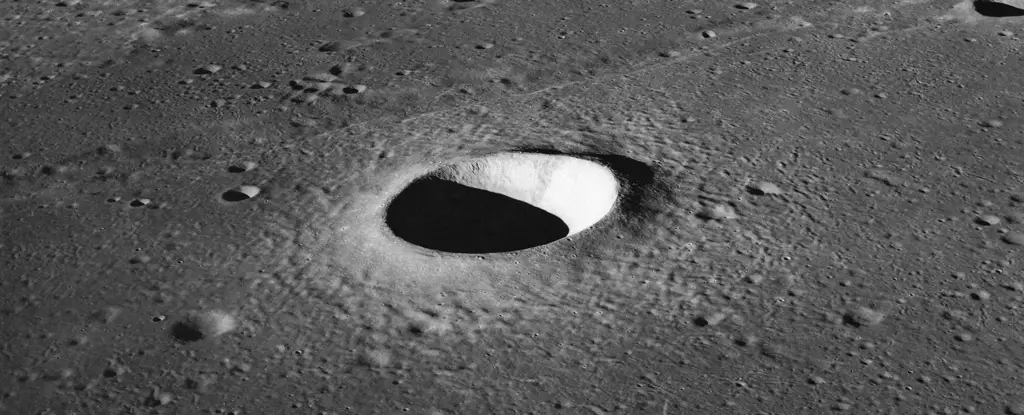The Moon’s façade is an intricate tapestry showcasing the dramatic history of our Solar System. Its surface is crisscrossed with impact craters, leaving a bold imprint of the cataclysmic events that have transpired over billions of years. Unlike our ever-evolving Earth, characterized by dynamic weather patterns, tectonic movements, and geological restructuring, the Moon stands as a quiet sentinel—a vast, barren landscape seemingly frozen in time. This stark contrast is due in large part to the Moon’s lack of a protective atmosphere and minimal geological activity, which allows the craters, ranging from tiny pits to grand basins exceeding 1,000 kilometers, to endure for epochs. This geological stability offers us a rare glimpse into the violent remnants of the Late Heavy Bombardment, a period approximately 4 billion years ago, during which our inner Solar System was bombarded by an avalanche of asteroids and comets.
Research: Bridging Moon and Earth Through Ejecta Analysis
Recent scientific endeavors have honed in on understanding lunar ejecta—material flung from the Moon due to impacts—emphasizing its role in shaping Earth’s own geological and life history. A notable research effort led by Jose Daniel Castro-Cisneros has refined our comprehension of how lunar debris finds its way to Earth. Utilizing advanced computer simulations far surpassing those of past analyses, the team examined a continuum of conditions over extended durations, providing a granular view of lunar materials that make this interplanetary leap.
Astoundingly, their research suggests that about 22.6% of the ejected material lands on Earth within a staggering timeline of 100,000 years—and intriguingly, the bulk of these collisions occur early on, within the initial 10,000 years following the impact. This redistribution of material not only illustrates the dynamic relationship between the Moon and Earth but also invites further inquiry into how these interactions have influenced both celestial bodies over ages.
Illuminating Kamo’oalewa: A Moon Detour Near Earth
One of the focal points of this study is the mysterious near-Earth object Kamo’oalewa, which scientists suspect could be relaying a piece of the Moon itself. This intriguing body—measuring between 36 to 100 meters in diameter—provides a unique opportunity to investigate the Moon’s legacy on our immediate cosmic neighborhood. The research team’s evolving models, powered by the sophisticated REBOUND simulation package, enhance the accuracy of tracking lunar ejecta trajectories, thus weaving a more detailed narrative of how some materials make their way to Earth as potential impactors or near-Earth objects.
The findings regarding the pathways of lunar material reveal much about the origin of impact events on Earth, ultimately contributing to our understanding of our planet’s geological narrative. Notably, the amount of high-speed material—traveling between 11.0 and 13.1 kilometers per second—striking the equatorial region significantly exceeds that of polar regions, with striking symmetry observed between diurnal cycles.
Unraveling the Impact Distribution: New Insights
The research opens new avenues for understanding how the initial conditions of impact ejections influence their ultimate trajectories. The revelation that the trailing side of the Moon leads to a higher probability of collisions with Earth emphasizes the complex interplay between celestial mechanics and impact dynamics. By tracking collision events at defined altitudes and maintaining a regular observation cadence to assess outcomes, the study has painted a more comprehensive picture of this material exchange process.
Moreover, the concept of power-law distribution; established through this research, indicates a profound correlation between the magnitude of impact ejections and their subsequent landing patterns on Earth—reshaping how we perceive the lunar surface’s influence on terrestrial events. It is this kind of detailed analytical approach that might unlock long-hidden secrets about both the Moon’s history and its contributions to the evolution of life on our planet.
A Window Into Cosmic History
As research continues to illuminate the bonds between the Moon and Earth, it becomes clear that the interactions and exchanges between these two bodies are far more intricate than previously understood. The wealth of preserved lunar capstones speaks volumes about a shared celestial history that informs theories about planetary development and the geological chronicle of Earth. This ongoing research doesn’t merely provide empirical data; it reshapes our understanding of the universe’s narrative, celebrating the complexities interlinking our Moon with life here on Earth.


Leave a Reply